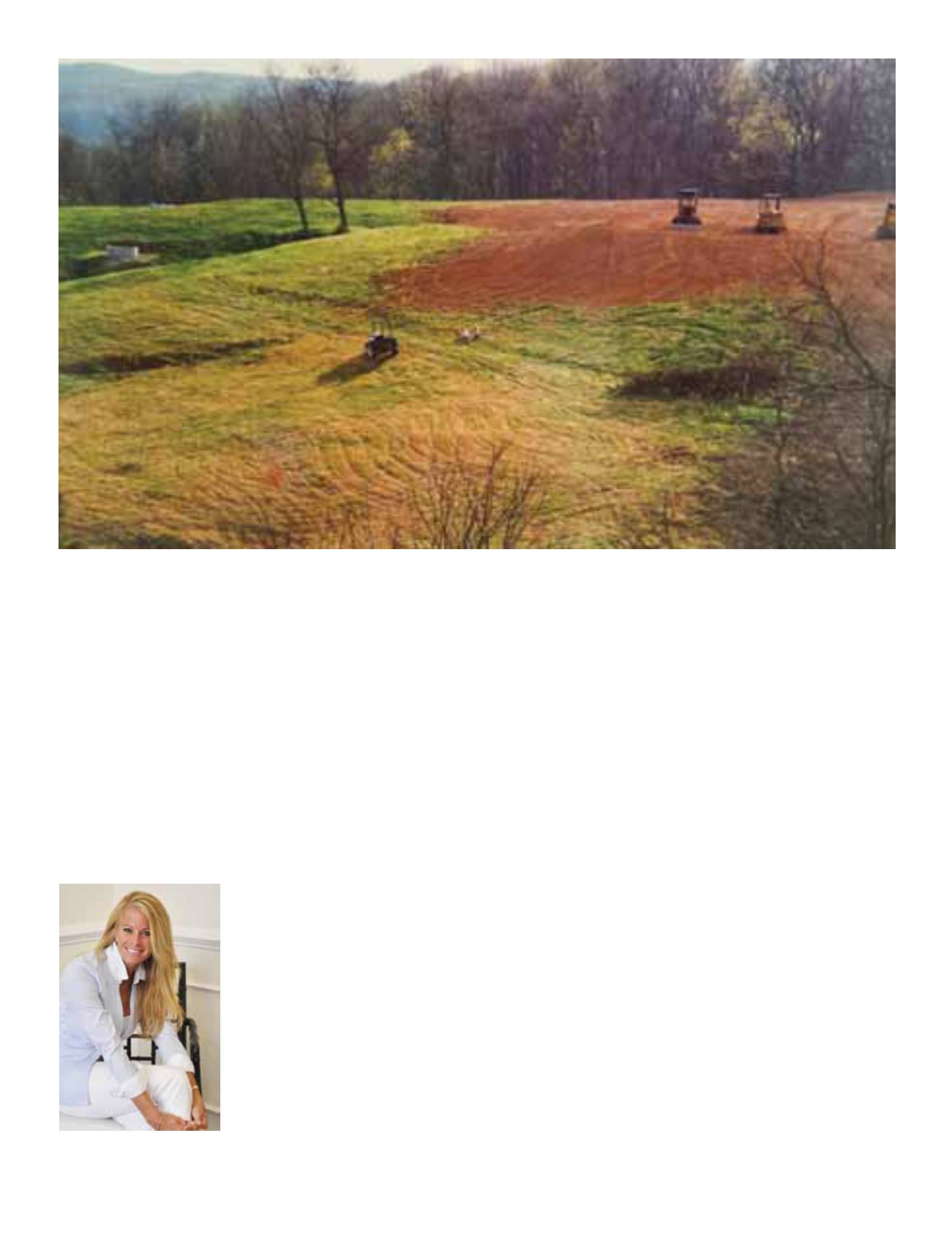
108 SIDELINES SEPTEMBER 2014
FOR HORSE PEOPLE • ABOUT HORSE PEOPLE
By Kathy Serio
This issue of
Sidelines
has a theme that encompasses
architecture and barn building, with beautiful photos and excellent
advice for your barn building needs. Although I’m in the process
of adding two simple little stalls to my current quaint four-stall
barn, which I love without question, I am
not
the authority on barn
building.
I did, however, design and build a 22-stall barn from scratch
in the mid- to late-1990s in Huntington, West Virginia, with my
ex-husband. We pounded every nail into every fence board and
put every fence post in the ground ourselves, a labor of crazy ol’
young love.
In fact, one time, using the tractor with auger to dig fence-post
holes, his pants were ripped right off his body through a hole he
had in his jeans, as the auger came up from the red clay. As he
stood there in just his tighty whities, we were at first silent, in
complete shock, then we felt relieved and incredibly lucky, then
came the nonstop laughter. Where
were cell phone cameras back then?
We always laughed and had a good
time “working the land.”
My ex-husband and I even had to
put in utility poles and lines up one
side of the mountain and we had
to “find” water for the well, as this
e
Amateur Barn Building Gone Awry
property was raw land. I used to jokingly sing my made-up version
to the tune of “There Was an Old Lady That Swallowed a Fly.”
My
version went: “There was a young (at the time I was young)
lady that built a barn, I don’t know why she built a barn, I think
she’ll die.” It truly was an amazing experience but every stressor
one can possibly think of about building a smaller-scale house
became magnified by at least a zillion when it came to building
this barn.
So with all this great knowledge accumulated over the years, I
am the authority on what
not
to do when building a barn. Here are
several things I would, perhaps, do a little bit differently:
Step One: Find Water Before Building
Find water before building a 22-stall barn, with a two-bedroom
apartment overhead and a beautiful indoor and outdoor arena on
the top of a mountain. Mr. and Mr. Wilson were my well drillers
and they were such wonderful older gentlemen, with wonderful
well-digging stories.
I could listen to them tell their stories in their baggy old real
denim overalls and slow southern drawl for hours. Every day I
would see them on the horizon of the far field on top of our
mountain, with their well-digging machine up in the air and the
banging, banging, banging, drilling for water. It was such a lovely
sound and, like the TV “Beverly Hillbillies” Clampetts hitting oil, we
couldn’t wait to hit water!
I made the Wilson brothers lunch every day. I’d pack little bags
and take them out to the field, and they’d entertain me with old
West Virginia stories. Each day, they’d say, “We’re gettin’ close,
Ms. Mailloux. We’re gettin’ close.” Uh huh, highly unlikely.
Meanwhile, in Florida, when I had to put in a new well to irrigate
my new GGT Arena, the well drillers came out and had the well
completed in 24 hours — top to bottom, and the irrigation was
put in one day after that. Literally, I went from no water for an
arena to simply pushing a button and the arena is automatically
watered for 15 minutes twice a day, in 48 hours. Considering my
only brush with “hitting water” was in West Virginia, to me a well in
Raw Land — the wells were at the
far left end, out of view of this photo.
Photos courtesy of Kathy Serio
Kathy Serio
Photo by Holly Gannon Taboada
Photography
About the writer: Kathy Serio is an amateur
rider based in Wellington, Florida, where she
works full time in the equine pharmaceutical
industry. In 2012 she married her trainer of 12
years, Tommy Serio, who often calls her “Lucy,”
for “Lucille Ball.” Being trained by her husband
brings a whole new dimension to riding as an
amateur. Kathy spends her spare time riding
and laughing with her 2- and 4-legged gang. As
Charlie Chaplin said, “A day without laughter is
a day wasted.”


